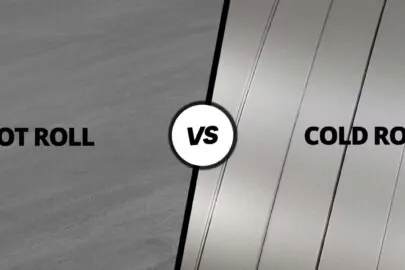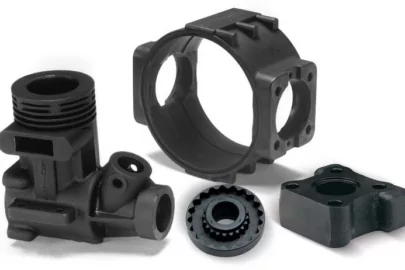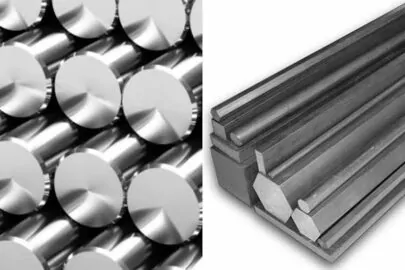Anodized aluminum was first documented in the early 1920s when the process helped protect seaplanes against saltwater corrosion. Since then, this technique has been used in many other applications in various industries.
Anodized aluminum is aluminum alloy that has gone through the anodizing process to create a corrosion-resistant, durable, and aesthetically pleasing surface. When you compare it with regular aluminum, it offers many noteworthy advantages.
What is anodized aluminum? How is aluminum anodized? What are the advantages and applications of anodized aluminum? You will find the answers to these questions and more in this article.
What Is Anodized Aluminum?
Anodized aluminum is one that has undergone an anodizing process, resulting in a robust, corrosion-resistant, and visually appealing surface. Using an electrochemical method in multiple tanks, an anodic layer forms on the aluminum surface. This ensures it remains intact without chipping, peeling, or flaking. This process increases aluminum’s hardness threefold compared to standard aluminum while also making it 60% lighter than copper and stainless steel.

The anodizing process integrates a stable aluminum oxide layer with the underlying substrate, enhancing the aluminum’s strength and durability. This added layer is porous, making it suitable for applying paints, lubricants, dyes, and adhesives. This offers the anodized aluminum a distinctive and enduring, aesthetically pleasing finish.
Likewise, it improves corrosion and wear resistance in harsh environmental conditions. Moreover, anodizing doesn’t compromise the recyclability of aluminum. It is even considered more environmentally friendly than electroplating and spraying. If you’re wondering how to anodize aluminum, here’s a detailed explanation.
The Process of Anodizing Aluminum
The aluminum anodizing process involves controlled oxidation. It uses an acidic electrolyte bath with direct electrical current supplied to anodes and cathodes. During anodizing, aluminum parts act as the anode. On the other hand, a cathode plate or rod contributes the negative part of the electrical circuit in the aluminum anodizing kit. This rod is made of platinum, lead, stainless steel, or carbon.

Applying voltage leads to the loss of positive ions from the aluminum part. As a result, it attracts negative ions, resulting in a layer of aluminum oxide on the surface. This process is commonly applied to aluminum. However, non-ferrous metals such as titanium, magnesium, zinc, and conductive plastics can also undergo anodizing. Ferrous metals like carbon steel are unsuitable due to ferrous oxide or rust formation.
Anodizing operations may be conducted in batches or continuously. Batch anodizing involves placing parts in a rack and immersing them in a series of baths. This method is employed for castings, cookware, and bent machined parts. On the other hand, the pre-rolled material is unwound in continuous or coil anodizing. This allows it to continuously progress through the process steps. Once completed, the material is coiled and shipped to the customer. Continuous anodizing is suitable for including wires, sheets, plates, and foils.
Stages of Aluminum Anodizing

The aluminum anodization process occurs in four different stages:
Stage 1: Pre-Treatment
The pre-treatment stage directly impacts the appearance and quality of the final anodized part. This phase entails the removal of contaminants like dirt and grease from the surface of the raw aluminum part. This removal process removes potential hindrances and addresses minor surface imperfections.
Furthermore, machining processes, like cutting, drilling, and welding, should precede this stage. Pre-treatment can be executed through chemical or mechanical methods.
- Chemical Pre-Treatment: Chemical pre-treatment involves using chemical solutions to eliminate dirt, grease, and surface oxides. This process includes deoxidizing agents and an etching or brightening step. Etching uses substances like sodium hydroxide or trisodium phosphate to create a matte finish. Brightening produces a mirror-like or shiny finish by flattening and smoothing the surface defects using phosphoric or nitric acid.
- Mechanical Pre-Treatment: In mechanical pre-treatment, procedures like abrasive polishing, shot peening, and sandblasting are employed to improve the aluminum part’s surface. Shot peening and sandblasting enhance hardness, fatigue resistance, and coating adhesion.
Stage 2: Electrolysis
The core of an anodizing operation is the electrolysis process. During this stage, the aluminum part is immersed in an electrolytic solution bath containing positively and negatively charged ions. This is followed by connecting the aluminum part and the cathode to the positive and negative terminals of the DC power supply, respectively.
This process induces a positive charge on the aluminum part as electrons are withdrawn. These electrons travel through the electrolyte bath to the cathode interface, where they react with the hydrogen ions to produce hydrogen gas. Simultaneously, the aluminum cations at the surface react with water to form a layer of aluminum oxide (Al₂O₃).
Stage 3: Barrier Oxide Film
A barrier oxide film forms on the surface of the aluminum part surface in a neutral solution, like phosphate, ammonium borate, or tartrate compositions. Aluminum oxide is insoluble in these solutions. This durable and unreactive film protects the underlying aluminum from environmental factors. The thickness of the barrier oxide film is dependent upon the voltage between the anode and cathode. A maximum voltage limit helps prevent side reactions like sparking, oxygen evolution, and solute oxidation.
Stage 4: Porous Oxide Film
A porous oxide film develops on the surface when grown in a dilute acidic solution (approximately 10% acid content). Sulfuric acid is commonly used in acidic electrolyte baths. However, machinists also carry out anodizing in phosphoric acid, chromic acid, oxalic acid, and various other acid mixtures. This acidic solution can maintain a high concentration of aluminum oxide molecules.
At the anode side, the reaction leads to the formation of a barrier aluminum oxide film. As current flows through the anodized aluminum pan, it concentrates on weak and reactive spots, creating a highly porous film. The aluminum oxides removed from the pores dissolve in the acidic solution.
The film thickness is directly related to electrolysis voltage and time. Higher voltage and longer times result in a deeper column-like hollow structure and thicker oxide films. Pore dimensions, on the other hand, are influenced by the temperature, bath voltage, and acid concentration.
Common Types of Aluminum Anodizing Processes
There are three primary types of aluminum anodizing processes according to the MIL-A-8625 specification. They produce varying properties.
Type I Anodizing (Chromic Acid Anodizing)
The Type I anodizing process creates a thin coating on aluminum parts using chromic acid. The coating reaches up to 0.0001 inches. Despite being the thinnest among the three primary types, Type I enhances the corrosion resistance of components. This type appears notably grayer and less color-absorbent when dyed. It may not be the best option for a decorative finish.
However, black-dyed chromic anodize can serve as a non-reflective protective coating on optical component housings. It appears lighter than traditional sulfuric black anodize. The features of Type I anodizing include:
- Excellent choice for tight tolerance requirements
- It offers non-conductive coating
- Good for bonding
- Suitable for anodized aluminum black dying, but other colors may not be practical
- A good choice for welded parts and assemblies
The applications of Type I anodizing are
- Aerospace parts
- Welded parts and assemblies
- Precision-machined parts
- As a prime/paint base

Type II Anodizing (Sulfuric Acid Anodizing)
The sulfuric acid process is the predominant method for anodizing, producing films with thicknesses ranging from 0.0002 to 0.001 inches. The resulting coating has a 67% penetration into the substrate and a 33% increase over the initial part’s dimension. This makes it well-suited for applications requiring hardness and abrasion resistance.
Notably, the porous nature of sulfuric acid films before sealing is advantageous for creating colored finishes on aluminum and its alloys. The efficient absorption and sealing of dyes by the porous aluminum oxide prevents color loss in service. Available aluminum anodized colors include red, black, blue, coyote brown, urban gray, green, and gold. The features include the following:
- Relatively more cost-effective than other anodizing types concerning the chemicals used, power consumption, and time required to get the suitable thickness
- Suitable for a wide range of alloys
- Offers more hardness than Type I anodizing
- Gives a clear anodized aluminum, allowing different colors of dyes
- Easier waste treatment than Type I
The applications of this anodizing type include:
- Optical components
- Components for military operations
- Mechanical hardware
- Electronic enclosures
Type III Anodizing (Hard Anodizing)
While hardcoat anodizing commonly uses a sulfuric acid-based electrolyte, it differs significantly from sulfuric acid anodizing. It produces a substantially thicker and denser anodized layer, exceeding 0.001 inches. It offers a harder, thicker, and more durable coating compared to Type II anodize.
Therefore, this method is intended for aluminum components facing corrosive or heavy wear environments. Furthermore, hard anodized aluminum is valuable when superior electrical insulation is needed. Its ability to develop up to several thousandths in certain situations makes it a great option for salvaging damaged or improperly machined components. The features include:
- Increase wear and corrosion resistance
- Compatible with black dye
- Suitable for parts needed for slide applications
- Non-conductive coating
- Harder finish than tool steel
The applications include:
- Pistons
- Valves
- Sliding parts
- Cams
- Hinge mechanisms
- Gears
- Insulation plates
- Swivel joints
- Blast shields
Here’s a table of comparison for the different types of anodizing available. This will help you choose the best one for your applications.
| Features | Type I Anodizing | Type II Anodizing | Type III Anodizing |
| Coating Thickness | 0.08 to 0.23 µm | 2.54 to 25 µm | 12.7 to 80 µm |
| Corrosion Resistance | Good | Good | Excellent |
| Wear Resistance | Poor | Moderate | Excellent |
| Appearance | Primary Coat | Clear or Dyed | Hard Black or Hard Clear |
| Process Temperature | Room temperature (relatively low) | Room temperature(moderate) | Low temperature (around -2°C or 0°C) |
| Current Density | Low | Moderate | High |
| Porosity | Low | Moderate to High | High |
| Hardness | Low | Moderate | High (comparable to hard chrome plating) |
| Coloring | Relatively limited, basically only gray and black options | Easily dyed with a wide range of colors | Limited dyeing options due to non-porous surface |
| Environmental Friendliness | Not environmentally friendly | Environmentally friendly | Environmentally friendly |
| Applications | Decorative | Decorative | Wear and Corrosion Resistance |
How Colors Are Added to Anodized Aluminum Parts
Two prevalent methods for introducing color to anodized aluminum are electrolytic coloring and dip coloring.

Electrolytic Coloring
Electrolytic coloring has been employed to achieve vibrant colors for anodized aluminum parts. Following the anodization process, the aluminum is immersed in a solution containing metallic salts to initiate coloring. Current is supplied to the anodized aluminum with pores, causing the metallic salts to fill the base of the pores on the coating.
The resulting coloration and tone are determined by the specific metallic salts used. For instance, copper salts yield a reddish color. This method is often employed due to its resistance to ultraviolet rays and its long-lasting effects.
Dip Coloring
Dip coloring offers a diverse range of colors. The freshly anodized aluminum part is initially immersed in a liquid solution containing inorganic or organic dyes. After the porous layer absorbs the dye, the surface is rinsed in water to prevent further reaction. While providing more color options, the dip coloring method is not UV-resistant. The eventual result may fade quickly over time.
Advantages of Aluminum Anodizing
Aluminum is widely employed due to its advantageous properties. While it does not rust, it remains susceptible to other factors like wear and tear. Here are some of the advantages of using the anodizing process on aluminum components.

Improved Durability
While aluminum is inherently durable, the anodization process enhances its surface toughness. Anodized aluminum develops a surface three times harder than standard aluminum and is resistant to flaking, chipping, and peeling. Controlled oxidation during anodization ensures the material will never rust or weather. This makes it one of the most resilient and versatile metal products available. Additionally, the outer anodized layer imparts insulating properties, resulting in lower electrical conductivity than the original material.
Improved Aesthetics
Anodized aluminum possesses an aesthetically pleasing appearance that enhances the visual appeal of any item. Anodized metal exhibits a bright, new silver color in its natural state. Furthermore, it can be treated to achieve a bright or matte finish. Additionally, customization options allow for unique textures such as brushed, pebble tone, or stucco, providing your product with a distinctive look and feel.
More Color Options
The anodic layer’s open pore structure allows anodized aluminum to be tailored to match various brand colors or Pantone swatches. Its versatility extends to replicating the appearance of different metals without the risk of weathering. Due to the inherent properties of anodized aluminum, the chosen color will endure without chipping, flaking, or peeling throughout the product’s lifetime.
Lightweight Option
Anodized aluminum is around 60% lighter than stainless steel, brass, or copper. This characteristic reduces shipping costs and addresses various design challenges. Anodized aluminum is a versatile solution for creating consumer goods or architecture. It provides a combination of lightweight, aesthetic appeal, and durability.
Cost-Effective
Anodized aluminum, with its high strength-to-weight ratio, boasts a lower overall cost per square foot compared to materials like steel, bronze, zinc, copper, and brass while delivering the same visual impact. Aluminum’s status as the only 100% recyclable metal, coupled with the environmentally friendly anodization process, contributes to its reduced overall cost.
Applications for Aluminum Anodizing

Anodizing is a high-quality finishing and cost-effective process widely employed in various industries for multiple applications. Some industries that use aluminum anodizing include:
- Automotive
- Architecture
- Aerospace
- Consumer goods
- Homeware sectors
Some specific applications of this incredible process include:
- Automotive trim and bike frames
- Phone cases and tablet enclosures
- Kitchen equipment and cookware
- Rail car panels
- Store signage and elevator panes
- Duct covers
- Light fixtures
- Window frames
- Electronic casings
Design Tips for Anodizing Aluminum
Anodizing aluminum parts may not be overly complicated, but certain tips can facilitate the process. Here are a few essential tips to assist you in the procedure.
Consider Tolerances
When opting for the anodizing process on your aluminum component, note that it adds some thickness to the part. This additional thickness may marginally impact tolerances. Consider Type I or Type II anodizing options if tight tolerances are crucial. Also, you should factor in the additional layer during the design stage.
Corners and Edges
When using the anodizing process, ensure that all corners and edges of your workpiece have radii of at least 0.5 mm. Additionally, part designs should avoid incorporating any burrs. These design considerations are essential to prevent overheating or burning the workpiece caused by a high electric current concentration.
Consider Other Finishes
Anodizing, being an electrochemical process, differs from bead blasting or polishing. It may not eliminate all machine marks or scratches on the surface of an aluminum machined part. Consider bead blasting, polishing, or another mechanical finishing process before anodizing if a uniform surface finish is necessary. Anodizing contributes to smoothing the part surface.
Color Consideration
When establishing your desired color, remember that different metals and alloys respond differently to dyeing compounds and coloring parameters. For coloring aluminum parts or products, anodize them in small batches. This practice enhances color uniformity.
Conclusion
Anodizing is a crucial manufacturing process. It entails immersing aluminum components into electrolytic solutions and chemical baths. It ensures the production of better and more high-quality end products. Many industries use anodized aluminum for their products due to its many benefits.
We’ve explored the anodized meaning and how you can get aluminum anodized. You should be ready for your next project. At Zintilon, our professional aluminum anodizing service offers optimal value through superior-quality processes, fast turn-around times, and competitive pricing. Feel free to contact us for expert advice on different surface finishing services to improve your prototypes and parts.
Great, Together


